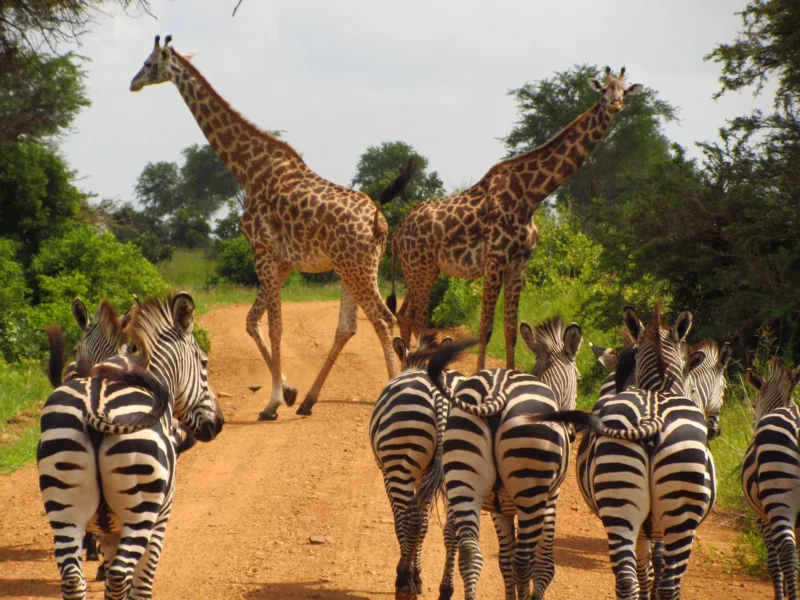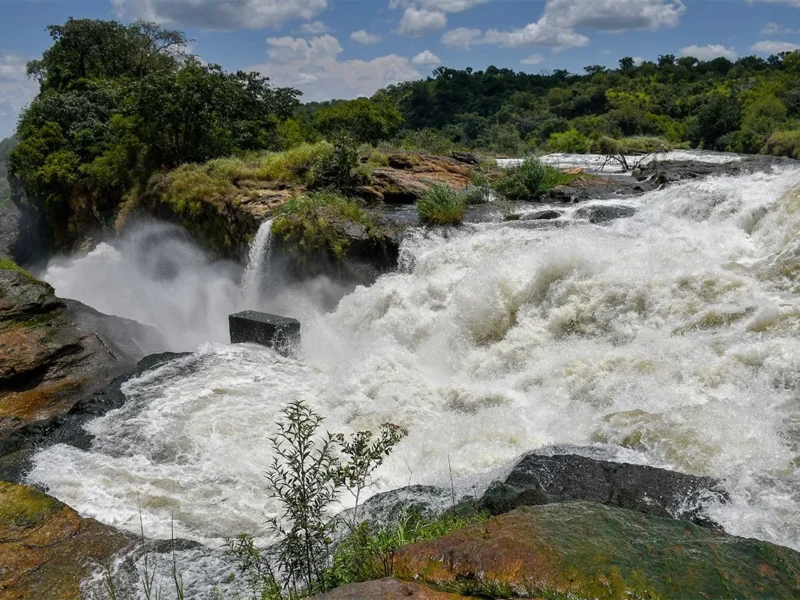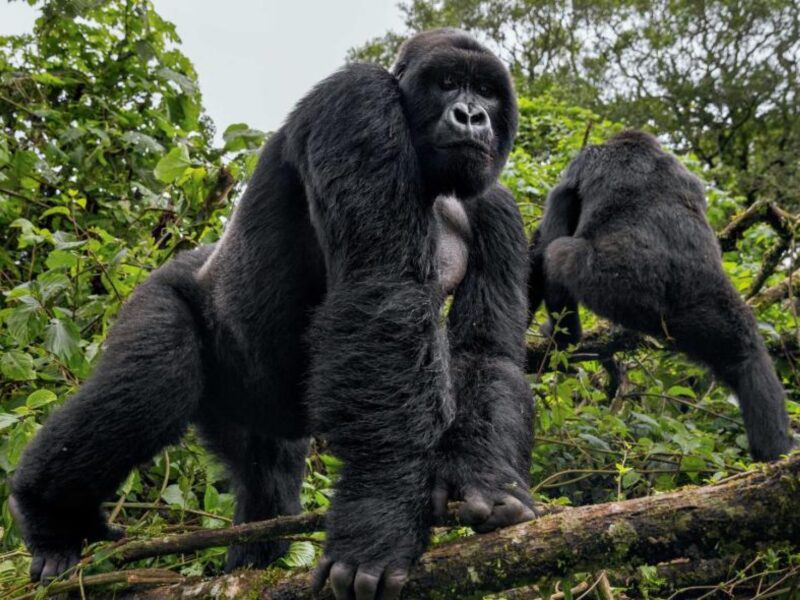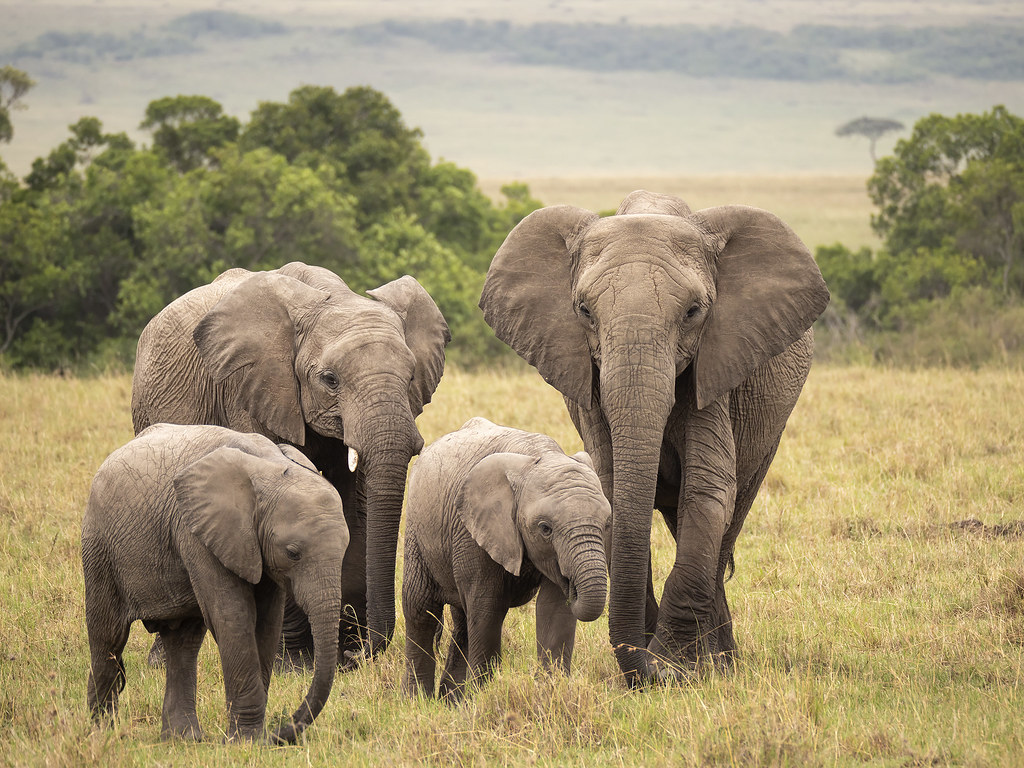
Elephants In Kenya
April 7, 2025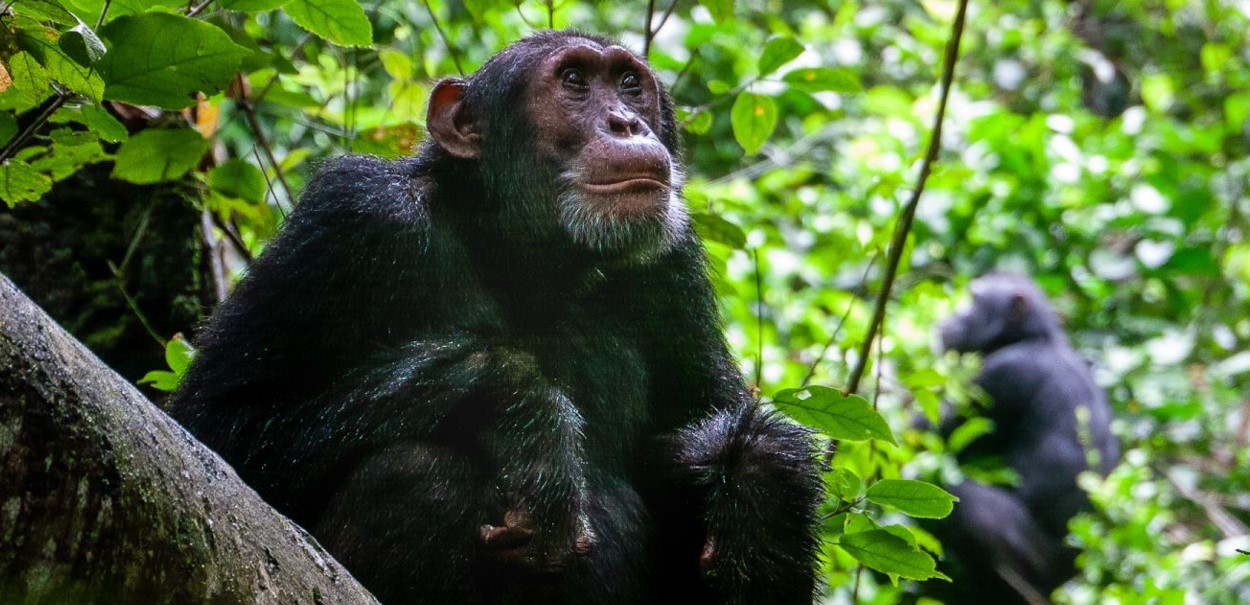
Chimpanzees In the pearl
April 7, 2025Tourism in Tanzania: A Detailed Overview
Tanzania, located in East Africa, is an iconic travel destination, rich in natural beauty, cultural heritage, and wildlife. From its famed safari destinations like the Serengeti and Ngorongoro Crater to the pristine beaches of Zanzibar, Tanzania is one of Africa’s most renowned and diverse tourism spots. It offers tourists a wide variety of experiences, from wildlife safaris to mountaineering expeditions and cultural encounters. In this comprehensive guide, we will dive deeper into the tourism opportunities, key attractions, activities, and economic impact of tourism in Tanzania.
Tourist attractions in Tanzania:
Serengeti National Park is one of the most iconic and renowned wildlife conservation areas in the world. Located in northern Tanzania, this UNESCO World Heritage Site covers approximately 14,750 square kilometers and is widely recognized for its breathtaking landscapes, abundant wildlife, and the famous Great Migration. The Serengeti’s diverse ecosystems and remarkable wildlife have made it one of the top safari destinations on the planet.
History and Significance
Serengeti National Park was established in 1951 to protect its incredible biodiversity, but its history as a protected area dates back much further, with indigenous peoples inhabiting and managing the land for centuries. The park’s name, “Serengeti,” comes from the Maasai word “Siringet,” meaning “endless plains,” which perfectly describes the vast, flat savannahs that dominate the landscape.
Serengeti is part of the larger Serengeti ecosystem, which includes areas like the Ngorongoro Conservation Area and Maswa Game Reserve. The Serengeti’s geographical and ecological importance has earned it a reputation as the cradle of humanity due to its historical significance in the study of early human evolution.
Geography and Landscape
The park is famous for its diverse and stunning landscapes, ranging from grassy plains, river valleys, and acacia woodlands, to rocky outcrops known as “kopjes.” The landscape varies across the park’s zones:
– Southern Serengeti: This area consists of vast open plains, which become golden during the dry season. It is the site of the Great Migration, where millions of wildebeest, zebras, and gazelles congregate in search of water and fresh grazing grounds.
– Western Serengeti: Known for its woodlands and river systems, the western part of the Serengeti is less frequented by tourists but offers incredible game-viewing opportunities. The Grumeti River, in this area, is famous for its dramatic river crossings during the Great Migration.
– Northern Serengeti: The northern region is home to the Mara River, where wildebeest and zebras face perilous river crossings, often encountering crocodiles. It is a key location during the Great Migration, especially between July and October.
– Central Serengeti: Known as the “Seronera” region, it is the heart of the park, offering a mix of grasslands, kopjes, and riverine forests. This area is abundant with wildlife year-round and is one of the best places for game viewing.
Wildlife and Biodiversity
Serengeti National Park is home to an astounding diversity of wildlife. It is often referred to as the “epicenter” of African wildlife and is a haven for those seeking to experience the “Big Five” (lion, leopard, elephant, buffalo, and rhinoceros) in their natural habitat.
The Great Migration
One of the most spectacular natural events on the planet, the Great Migration occurs annually when over 1.5 million wildebeest, 200,000 zebras, and hundreds of thousands of gazelles move across the Serengeti-Mara ecosystem. The migration follows the rains, with animals moving in search of fresh grazing and water. Along the way, they face numerous challenges, including crossing crocodile-infested rivers and encountering predators such as lions and cheetahs.
– Best Time to Visit for the Migration: The migration is a year-round spectacle, but the best time to witness the dramatic river crossings is between July and October, especially at the Mara River.
Big Cats and Predators
The Serengeti is renowned for its large populations of big cats, including:
– Lions: The Serengeti is home to one of the largest lion populations in Africa. The pride dynamics and their hunting strategies provide incredible wildlife watching opportunities.
– Leopards and Cheetahs: Leopards are often spotted lounging in trees, while cheetahs are seen sprinting across the plains, hunting for prey.
– Hyenas and Wild Dogs: The park also hosts large populations of hyenas, and occasionally, African wild dogs, which add to the drama of predator-prey interactions.
Herbivores
Besides the migrating wildebeest and zebras, the Serengeti is home to a rich diversity of herbivores such as:
– Thomson’s gazelles and Grant’s gazelles
– Buffaloes, impalas, and eland
– Giraffes, hippopotamuses, and antelope species like kudu and topi
These herbivores sustain the predator populations in the park and play a vital role in the ecosystem’s balance.
Activities and Experiences
Serengeti National Park is a top destination for a variety of safari experiences, each designed to give tourists the opportunity to immerse themselves in the wilderness.
1. Game Drives
The most popular activity in the Serengeti, game drives allow tourists to explore the park’s diverse landscapes in search of wildlife. Experienced guides take visitors to prime locations where sightings of lions, cheetahs, elephants, and other animals are common. The park’s accessibility and the variety of habitats make it an excellent destination for both morning and afternoon game drives.
2. Hot Air Balloon Safaris
For a unique perspective of the Serengeti, tourists can take a hot air balloon safari at sunrise. This once-in-a-lifetime experience offers panoramic views of the plains and wildlife below, while the drifting balloon provides a peaceful, unobtrusive way to witness the beauty of the park.
3. Walking Safaris
For those seeking a more intimate experience with nature, guided walking safaris are offered in certain areas of the park. Accompanied by a professional guide, visitors can explore the Serengeti on foot and learn about its ecosystems, tracks, and smaller wildlife.
4. Cultural Tours
Visitors can also learn about the Maasai people, who have lived in the Serengeti region for centuries. Maasai cultural tours offer insights into their traditional way of life, customs, and deep connection to the land and wildlife.
5. Photography Safaris
The Serengeti’s stunning scenery, abundant wildlife, and dramatic landscapes provide incredible opportunities for wildlife photography. Many visitors come to the park specifically to capture the breathtaking moments of predator-prey interactions or the spectacle of the Great Migration.
Best Time to Visit
While Serengeti National Park is a year-round destination, the best time to visit depends on what you want to experience:
– Dry Season (June to October): This is the ideal time for game viewing, as animals tend to gather around waterholes, making them easier to spot. This period coincides with the migration, particularly in the northern and western parts of the park.
– Green Season (November to May): The wet season is perfect for those seeking a quieter experience. The landscape is lush and green, with fewer tourists. The migration is also present, particularly in the southern Serengeti, where calving season occurs (February to March).
Conservation Efforts
Serengeti National Park is vital for preserving biodiversity in the region, and there are ongoing conservation efforts aimed at maintaining its ecological integrity. This includes:
– Anti-poaching initiatives to protect endangered species like rhinos and elephants.
– Research and monitoring programs to track animal movements, population dynamics, and health.
– Community-based conservation efforts to involve local communities in wildlife protection and eco-tourism.
Serengeti National Park is a jewel in the heart of East Africa and remains a premier destination for nature lovers, adventure seekers, and those wanting to witness one of the most spectacular wildlife phenomena on Earth. Whether you’re captivated by the drama of the Great Migration, the majesty of the big cats, or the serenity of the vast plains, the Serengeti offers an unforgettable safari experience. As a symbol of Tanzania’s rich natural heritage, the Serengeti is both a place of adventure and a crucial sanctuary for wildlife conservation.
-
- Zanzibar Archipelago:
A Detailed Overview
The Zanzibar Archipelago is a stunning tropical paradise located off the east coast of Africa, in the Indian Ocean, and is part of the United Republic of Tanzania. The archipelago consists of several islands, with the two largest being Unguja (commonly known as Zanzibar Island) and Pemba Island, along with numerous smaller islands and islets. Zanzibar is famous for its pristine beaches, rich history, vibrant culture, and unique blend of African, Arab, Indian, and European influences.
Zanzibar is not only an idyllic destination for beach lovers but also a historically significant region, having been a major trading hub for centuries. Today, Zanzibar offers an exciting combination of scenic beauty, cultural heritage, and historical landmarks, making it one of East Africa’s premier tourist destinations.
Geography and Climate
The Zanzibar Archipelago is located around 25–50 kilometers off the coast of mainland Tanzania, and it covers an area of approximately 2,400 square kilometers. The islands are part of Tanzania but have a semi-autonomous government, with their own president and legislature.
The climate in Zanzibar is tropical, characterized by two rainy seasons:
– Long rains from March to May
– Short rains in November and December
The best time to visit Zanzibar is during the dry season between June and October, when the weather is warm and sunny, ideal for beach holidays, water sports, and outdoor exploration.
The landscape is a combination of sandy beaches, coral reefs, mangrove forests, and low hills. Zanzibar’s coastlines are dotted with pristine white sand beaches, crystal-clear turquoise waters, and vibrant coral reefs that make it a haven for snorkelers, divers, and nature enthusiasts.
Major Islands and Attraction
Unguja (Zanzibar Island)
Unguja, often simply referred to as Zanzibar Island, is the largest and most populous island in the archipelago. It is home to Stone Town, a UNESCO World Heritage site, and some of the most famous beaches in East Africa.
1. Stone Town
– Historical Significance: Stone Town is the heart of Zanzibar’s cultural and historical identity. The town features a labyrinth of narrow, winding streets, historic buildings, and bustling markets that showcase its unique blend of Arab, Persian, Indian, and European architecture.
– Landmarks: Some key landmarks in Stone Town include the House of Wonders, Freddie Mercury’s House, Old Fort, Zanzibar Slave Market, and the Sultan’s Palace.
– Cultural Heritage: Visitors can explore the town’s vibrant mix of mosques, churches, and bazaars, while immersing themselves in the sounds, sights, and tastes that define Zanzibar’s rich cultural history.
2. Spice Plantations
– Zanzibar is famously known as the “Spice Island” due to its long history of spice cultivation, including cloves, nutmeg, cinnamon, and pepper. A visit to the spice plantations gives tourists the opportunity to see how these aromatic spices are grown, harvested, and processed. The tours also allow travellers to learn about the medicinal and culinary uses of the various spices.
3. Jozani Forest
– Located in the central part of Zanzibar Island, Jozani Forest is home to the endemic Zanzibar red colobus monkey, a critically endangered species. The forest is a great spot for eco-tourism, offering guided walks through lush mangrove forests, where visitors can observe unique flora and fauna.
4. Beaches
– Zanzibar Island is known for its gorgeous beaches, particularly along the eastern and northern coasts. Nungwi and Kendwa beaches, located in the north, are renowned for their white sand, crystal-clear water, and vibrant nightlife.
– On the east coast, Paje and Jambiani are popular for kite-surfing, and Michamvi is famous for its tranquil setting.
5. Pemba Island
Pemba Island is the second-largest island in the Zanzibar Archipelago, located to the north of Unguja. While smaller and less developed than Zanzibar Island, Pemba is known for its lush, hilly terrain, rich agricultural landscape, and a quieter, more laid-back atmosphere.
1.Pemba’s Coral Reefs and Marine Life
– Pemba is a diver’s paradise, with some of the best coral reefs and marine biodiversity in East Africa. The Pemba Channel is famous for its deep waters, where divers can encounter vibrant coral gardens, colorful fish, and larger marine creatures like whale sharks, dolphins, and turtles.
3. Vumawimbi Beach
– This secluded, pristine beach offers a peaceful retreat for those looking to relax away from the more popular tourist spots. It’s an ideal destination for those seeking tranquility, nature walks, or kayaking.
3. Historical Sites and Villages
– Chake Chake is the capital of Pemba and offers a glimpse into traditional Pemba life. The island also features the Pemba Island ruins, remnants of ancient Swahili villages and forts.
Activities and Experiences
Zanzibar offers an extensive range of activities for visitors, blending relaxation with adventure and cultural exploration.
1. Snorkeling and Diving
– Zanzibar’s coral reefs are world-class and provide ample opportunities for snorkelling and scuba diving. The reefs around Mnemba Atoll and Pemba Island are especially famous for their vibrant marine life, including tropical fish, sea turtles, and various species of rays.
2. Water Sports
– In addition to diving and snorkelling, visitors can enjoy activities such as kite surfing, deep-sea fishing, sailing, and kayaking along Zanzibar’s beautiful beaches.
3. Dhow Cruises
– Traditional dhow cruises offer an unforgettable experience, where visitors can sail on wooden boats (dhows) for sunset views, dolphin watching, or a picnic on a remote sandbank.
4. Cultural Tours
– Zanzibar’s rich cultural history is best experienced through visits to local villages, historical sites, and museums. Travelers can interact with locals, explore the Zanzibar National Museum, and learn about the island’s African, Arab, and European heritage.
5. Spice and Farm Tours
– A tour of Zanzibar’s spice plantations offers an insight into the history of spice cultivation, with the chance to taste and smell a variety of spices and herbs. Visitors can also experience the island’s farming culture by exploring small rural farms.
4. Zanzibar Cuisine
Zanzibar is famous for its diverse and flavorful cuisine, which reflects its blend of African, Arab, Indian, and European influences. The island’s food culture is characterized by the use of fresh ingredients, including seafood, spices, and tropical fruits. Some popular dishes include:
– Zanzibar Pilau: A fragrant rice dish cooked with spices, meat, or seafood.
– Urojo: A tangy soup served with a mix of meats, potatoes, and fried dough.
– Samosas and Mandazi: Popular snacks influenced by Indian cuisine.
– Fresh Seafood: Zanzibar is known for its delicious seafood, including lobster, prawns, fish, and octopus.
Getting to Zanzibar
Zanzibar is easily accessible via Zanzibar International Airport (ZNZ), which has regular flights from Dar es Salaam and other major cities in East Africa, as well as international destinations. Ferries also connect Zanzibar to the mainland Tanzanian port city of Dar es Salaam, providing a scenic and affordable route to the islands.
The Zanzibar Archipelago is an enchanting destination that offers a combination of beautiful beaches, vibrant cultural heritage, unique wildlife, and rich history. Whether you are looking for relaxation on pristine beaches, exploring the fascinating history of Stone Town, or diving into the colorful marine life, Zanzibar has something for everyone. Its welcoming atmosphere and fascinating mix of cultures make it a must-visit destination for anyone traveling to East Africa.
5. Mount Kilimanjaro
Standing at 5,895 meters, Mount Kilimanjaro is the highest peak in Africa and one of the most popular climbing destinations in the world. It draws trekkers from all over the globe to take on the challenge of reaching its summit. The mountain is famous for its diverse ecosystems, ranging from lush rainforests at the base to alpine desert at the summit.
– Highlights: Hiking routes like Machame, Marangu, Lemosho, and Rongai.
– Best Time to Visit: June to October and December to February for the best weather conditions.
6. Ngorongoro Crater
The Ngorongoro Crater, often referred to as the “Eden of Africa,” is the world’s largest inactive volcanic caldera. It is a UNESCO World Heritage Site and a key destination for safari-goers, as it is home to a high concentration of wildlife, including the endangered black rhino.
– Highlights: Game drives within the crater, wildlife viewing.
– Best Time to Visit: Year-round, although the dry season (June to October) is the best for wildlife viewing.
7. Tarangire National Park
Tarangire National Park is known for its large herds of elephants and spectacular baobab trees. It is less crowded than other parks in Tanzania, providing a more peaceful safari experience.
– Highlights: Elephant herds, baobab trees, birdwatching.
– Best Time to Visit: June to October, the dry season when wildlife is concentrated around water sources.
8.Selous Game Reserve
Selous Game Reserve is one of Africa’s largest protected areas, known for its vast wilderness and low visitor density. It offers a range of activities, including boat safaris along the Rufiji River, walking safaris, and traditional game drives.
– Highlights: Boat safaris, walking safaris, wildlife viewing in a remote and tranquil environment.
– Best Time to Visit: June to October.
8.Ruins of Kilwa Kisiwani
Located on the coast of southern Tanzania, Kilwa Kisiwani is an ancient Swahili trading town and UNESCO World Heritage Site. It has a rich history influenced by Arab, Persian, and African cultures.
– Highlights: The ruins, historical architecture, exploration of the Swahili coast history.
– Best Time to Visit: Year-round.
Tourism Activities in Tanzania
1. Wildlife Safaris
Tanzania is one of the best places in the world for a safari experience. Visitors can explore national parks and game reserves like Serengeti, Ngorongoro Crater, Tarangire, and Selous to observe the wide range of animals that inhabit the country’s protected areas.
– Safari Options: Game drives, walking safaris, balloon safaris, and boat safaris.
– Best Time to Visit: The dry season (June to October) is the best time for game viewing, as animals gather around water sources.
2. Climbing Mount Kilimanjaro
Climbing Mount Kilimanjaro is one of the most sought-after challenges for adventure enthusiasts. There are several routes available, each with unique features and varying degrees of difficulty. Climbers are treated to breathtaking views of the African landscape.
– Duration: 5 to 9 days, depending on the route.
– Best Time to Visit: January to March and June to October.
3. Beach Holidays in Zanzibar
Zanzibar offers an idyllic escape with its pristine beaches, crystal-clear waters, and vibrant marine life. Visitors can indulge in activities like snorkeling, scuba diving, kite surfing, and simply relaxing by the sea.
– Best Beaches: Nungwi, Kendwa, and Matemwe are among the most popular beaches.
4. Cultural Tourism
Tanzania is home to over 120 ethnic groups, each with its own unique culture, traditions, and history. Cultural tourism allows visitors to engage with indigenous communities, such as the Maasai, Hadzabe, and Chaga.
– Activities: Village visits, traditional dances, learning about indigenous crafts, and participating in rituals.
– Highlights: Maasai cultural tours, visiting the Hadzabe bushmen, and exploring local markets.
5.Diving and Snorkeling
Tanzania’s coastal regions, especially Zanzibar, Mafia Island, and Pemba Island, offer excellent opportunities for diving and snorkeling. The waters around these islands are home to vibrant coral reefs and diverse marine life.
– Marine Life: Whale sharks, turtles, dolphins, and an array of colorful fish.
– Best Time to Visit: October to March for optimal diving conditions.
Economic Impact of Tourism in Tanzania
Tourism is a major contributor to Tanzania’s economy, accounting for a significant portion of its GDP. The tourism sector provides jobs in hotels, transportation, guiding services, and conservation, among other industries. It also generates revenue that is crucial for the country’s economic development and conservation efforts. The following are some of the key economic benefits of tourism:
1. Job Creation: Tourism supports millions of jobs, both directly and indirectly. This includes tour guides, hotel staff, restaurant workers, and drivers. It also boosts employment in supporting industries like agriculture, crafts, and transportation.
2. Revenue Generation: Tourism contributes billions of dollars to Tanzania’s economy. The revenue generated from international tourists is essential for funding national parks, wildlife conservation programs, and infrastructure development.
3. Community Development: Tourism provides income for local communities, especially those near tourist attractions. This income is used to fund schools, health services, and infrastructure projects.
4. Conservation Funding: Entrance fees to national parks and reserves are vital for the maintenance and protection of Tanzania’s natural resources. These funds are reinvested into conservation programs that protect wildlife and their habitats.
Challenges and Sustainable Tourism Efforts
While Tanzania’s tourism industry has grown substantially, it faces challenges related to conservation, infrastructure, and environmental impact. To ensure the long-term viability of tourism, the government and conservation organizations are focused on sustainable tourism practices.
1. Wildlife Conservation: Poaching and habitat loss remain significant threats to Tanzania’s wildlife. To address these issues, anti-poaching efforts, stricter enforcement of laws, and community-based conservation initiatives have been put in place.
2. Environmental Impact: The increasing number of tourists puts pressure on the environment. Sustainable tourism initiatives focus on minimizing the ecological footprint of tourism activities, such as promoting eco-lodges, responsible wildlife viewing, and minimizing waste.
3. Infrastructure Development: Expanding and improving infrastructure, especially in remote areas, is crucial to supporting the growing number of tourists. Efforts are being made to improve roads, accommodation options, and transportation networks.
Tanzania is a truly exceptional destination for travelers seeking diverse experiences, from incredible wildlife safaris to challenging mountain climbs and relaxing beach holidays. Its tourism industry plays a critical role in the country’s economy, providing jobs, generating revenue, and funding conservation efforts. The government, local communities, and conservation organizations are working together to ensure that tourism continues to thrive while preserving the country’s rich natural and cultural heritage for future generations
Whether you’re looking for an adventurous safari, a relaxing beach retreat, or a cultural exploration, Tanzania offers something for every type of traveler. With its stunning landscapes, rich biodiversity, and welcoming people, Tanzania is a destination that promises unforgettable experiences.


